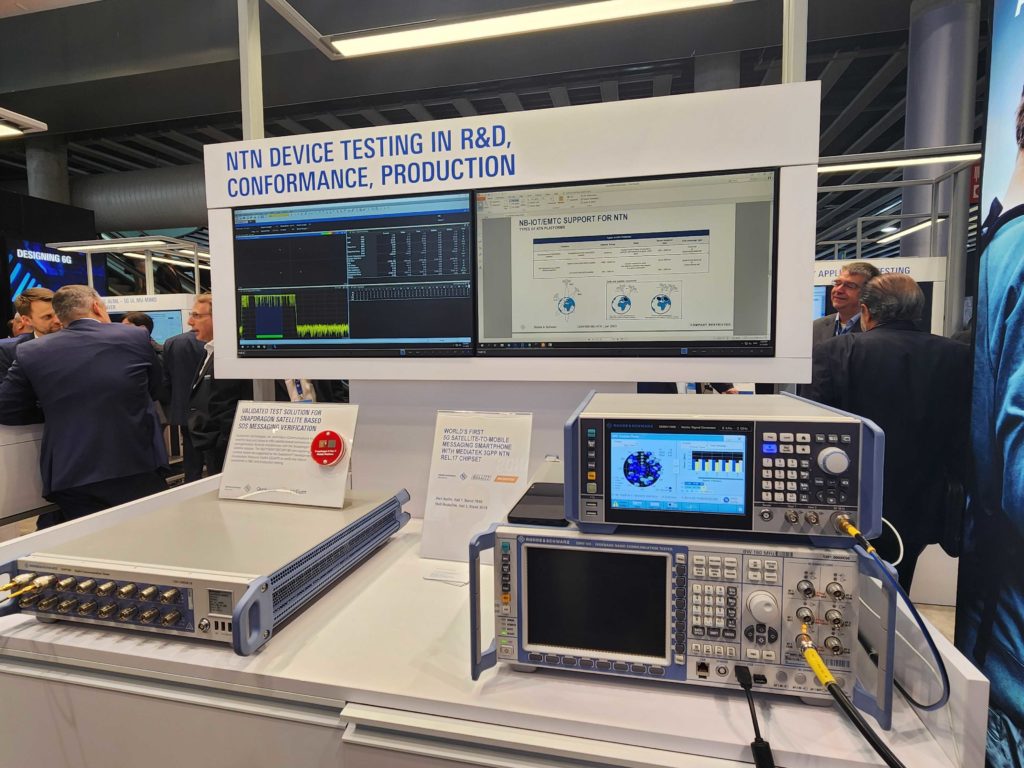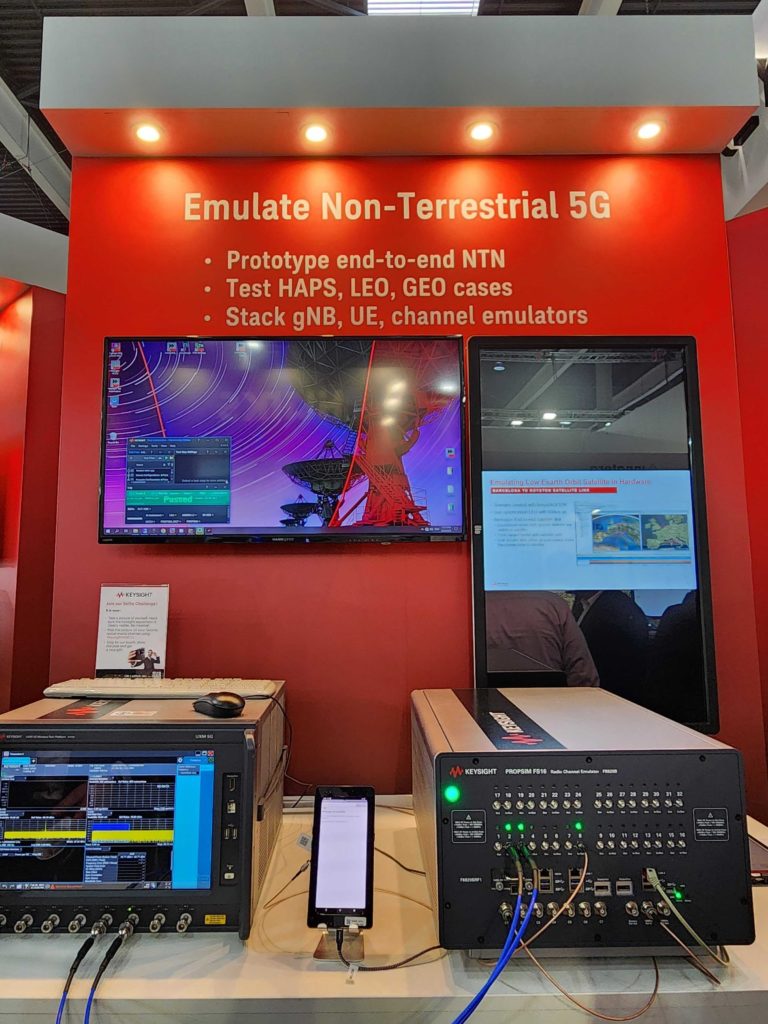BARCELONA—It was a hectic week for test and measurement vendors at Mobile World Congress 2023, with a slew of announcements, and demonstrations across the Fira, that illuminate where the industry’s attention and development efforts are focused.
Power usage—specifically, telecom equipment that can use less power and make more efficient use of what it does require—was a major theme at the show. Intriguingly, the T&M demos that focused on power efficiency also often tied in Open RAN as the tech enabling more power efficiency. Viavi Solutions, for instance, showcased its Nitro Location Intelligence xApp and rApp’s ability to provide a commercial RAN Intelligent Controller (RIC) with subscriber geolocation capability that can be used by other apps to enable autonomous decisions, including more efficient direction of radiated energy, and also the company’s TeraVM RIC Test for training apps that can boost energy-efficiency of network operations. And that was only one of more than half a dozen O-RAN related demonstrations that Viavi supported across the show floor, with partners ranging from AWS to CapGemini to TIP to VMware and others.
Keysight Technologies also tied green RANs to Open RAN, declaring that “energy efficiency is a top network operator priority as networks grow in capacity and reach,” and that intelligent control of various network elements from edge to core is really what facilitates reduced power usage and better efficiency. Keysight teamed up with Analog Devices to spotlight automated use of advanced energy-saving mechanisms within an Open RAN Radio Unit (RU), and also showcased its broader Open RAN energy saving solution that leverages power management features, telemetry and intelligent control, which is meant to work within a multi-vendor, cloudified O-RAN environment. Anritsu, meanwhile, focused on the RU as well, touting its offering of test scenarios that it said were “close to real network situations.” LitePoint, for its part, emphasized scalability and simplicity in its O-RAN testing demo with its IQFR1-RU, which it says is the industry’s first full integrated RU tester and simplifies RU testing (in part by not requiring a DU emulator).
5G Reduced Capability (also known as NR-Light) seems to be prepping for its day in the sun, with test vendors such as Rohde & Schwarz and Keysight featuring the Rel. 17 technology in their booths, on the heels of Qualcomm announcing the first RedCap modem-RF solutions earlier this month. RedCap doesn’t offer the full capability of 5G in terms of speeds and latency, but with a theoretical max download speed of 150 Mbps, it isn’t exactly shabby in terms of performance, depending on how much spectrum it is given to play in. Qualcomm has said that the tech “fills the gap in between high-speed mobile broadband devices and extremely low-bandwidth NB-IoT devices” and floated use cases such as premium smartwatches, next-generation XR glasses and industrial IoT broadly, but how the development of this tech shakes out seems a bit up in the air.

Speaking of up in the air (very, very up!), non-terrestrial networks, or putting 5G in space, offers some unique engineering hurdles that have to be overcome, and again, early signs of interest are strong. Qualcomm unveiled its Snapdragon Satellite in January, having established related relationships with Iridium and Garmin; Rohde & Schwarz had the chipset itself on-hand as part of its demo, and Keysight’s equipment was spotted in several places across the show floor showcasing emulation capabilities that are so important for testing equipment that has limited or no means of repair or physical adjustment once it is launched.

Test vendors are focused on providing the means to emulate and validate designs for 5G NTN and account for the latency and unique channel characteristics, including Doppler effects, that come along with supporting direct communications between smartphones and LEO satellites.
Much more to come on the highlights of this week’s show, so stay tuned.

